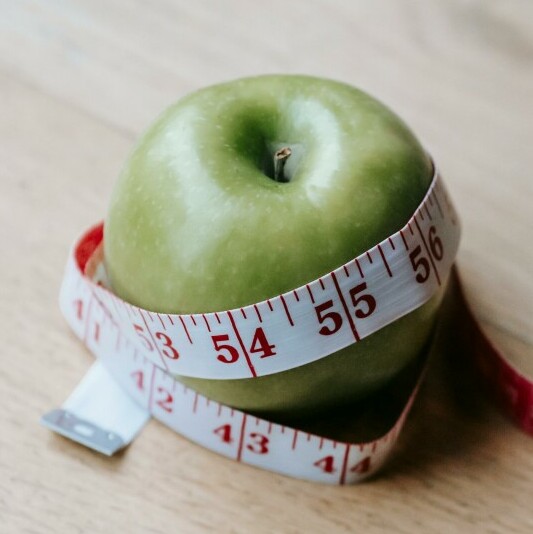 I’m going to take you on a journey into the realm of your eating habits. Guess what? They are often less about hunger and more about emotions or routines. That’s right, your craving for that chocolate bar might be less about the chocolate and more about the feeling you’re chasing or the habit you’ve created.
I’m going to take you on a journey into the realm of your eating habits. Guess what? They are often less about hunger and more about emotions or routines. That’s right, your craving for that chocolate bar might be less about the chocolate and more about the feeling you’re chasing or the habit you’ve created.
You’re going to find out about how certain cues, routines, and rewards create a ‘habit loop’ that can lock you into a cycle of bad eating. It’s important to know that every time we give in to a craving, we’re reinforcing a particular behavior pattern, making it harder to break.
Now, this isn’t just about recognizing bad patterns; it’s also about creating new, healthy ones. Mindful eating is a fantastic tool for this. It’s about being present with your food, really noticing the tastes, textures, and how you feel during and after you eat. This practice can shine a light on why we eat the way we do and lead us to make better choices.
Let’s not forget the sneakier side of things: foods that sabotage your success. These are often the ones loaded with sugar, fats, and other addictive components that keep you coming back for more. I’m here to help you identify these so you can make informed decisions moving toward a healthier you.
Setting yourself up for success with diet changes is next. Choose something that resonates with you and aligns with your lifestyle. And I’m talking about realistic, incremental changes, not an overnight overhaul. Don’t worry too much about perfect adherence; we’re aiming for consistent improvement. In the following section, we’re going to set these realistic goals together. Ready to take the next step?
Setting Realistic Goals for Change
You’re going to find out about setting goals for changing your eating habits, and it’s not about making huge, sweeping changes overnight. It’s about defining clear, achievable dietary targets that set you up for long-term success.
One thing I’ve learned is that gradual changes are more sustainable than drastic diets. So if you want to make lasting changes to your eating habits, focus on one small improvement at a time. You can always adjust your approach down the road, but starting small helps you avoid feeling overwhelmed and gives you the chance to build confidence with each success.
Now, when it comes to goal setting, SMART goals are a fantastic framework. That stands for Specific, Measurable, Achievable, Relevant, and Time-bound. By shaping your dietary goals within this structure, you’ll have a clear roadmap for success. Let’s say you want to cut down on sugar: a SMART goal might be, ‘I’ll reduce my soda consumption from one can a day to one can a week over the next month.’
And don’t worry too much about the days when you don’t meet your goals perfectly. The path to changing your relationship with food isn’t a straight line. Celebrate the small victories, like when you choose water over soda, because those are the steps that lead to a healthier you. Choose something that resonates with you and offers a sense of accomplishment; this builds the kind of positive momentum that fuels further progress.
Adopting a Positive Food Mindset
I’m going to let you in on a little secret: adopting a positive food mindset is a game-changer when it comes to breaking bad eating habits. This isn’t just about choosing salad over fries; it’s also about redefining your relationship with food. It’s about seeing food as an ally in your quest for health, not an enemy to defeat.
You’ve probably been down that road where you chastised yourself for slipping up or indulging too much. That’s going to include a lot of guilt and stress, which only feeds the cycle of bad eating. I’m here to help you reverse that. Instead of treating food like a strict teacher, let’s view it as a nurturing partner that fuels our bodies and minds.
All-or-nothing thinking is a common trap. You might think that if you can’t stick to your diet 100%, you’ve failed. But guess what? That’s not true. What’s more effective is allowing yourself some flexibility. Don’t worry too much about the occasional treat. The key lies in consistency, not perfection. Choose something that resonates with you and your lifestyle and stick with it.
Enriching your diet with a variety of foods is another way to foster a positive mindset. You’re going to find out about so many new flavors, textures, and combinations when you’re open to diversifying what you eat. And there’s a lot of opportunity in exploring healthy foods you’ve never tried before—it can actually be quite fun.
Think about the environment in which you eat. Make it a priority to eat without distractions, sit down at the table rather than in front of the TV, and really savor each bite. This creates a positive setting that helps you enjoy the experience of eating and listening to your body’s hunger and fullness cues.
You can always adjust your approach down the road, but for now, focus on building that healthy foundation. And remember, your first attempt doesn’t need to be your last. Adoption of these practices can help pave the way for what’s coming next: building a supportive eating environment, which we’ll get into shortly.
Building a Supportive Eating Environment
I’m here to help you make your kitchen a true ally in your journey toward healthier eating. You’re going to find out about simple tweaks that can transform your space into a health-friendly zone. Start by keeping wholesome snacks like fruits and nuts within easy reach and swapping out sugary treats with nutritious alternatives.
Your social settings can have a significant impact on your eating behaviors. Choose restaurants that offer healthier options, and don’t be shy to suggest sharing a meal if portions are large. At home, try making mealtime a family activity where everyone can be involved in selecting and preparing healthy dishes.
Strategies for handling cravings and temptation play a crucial role. Keep a food diary to track your triggers, and find healthier ways to deal with stress or emotion, like a brisk walk or a relaxing bath. If you want to indulge occasionally, go for smaller portions or healthier versions of your favorite treats.
Involve family and friends in your healthy eating journey for added support and accountability. They can be your cheerleaders and also benefit from the positive changes. Instead of meeting up for coffee and cake, suggest a walk in the park. Choose something that resonates with everyone and make healthy living fun and communal.
